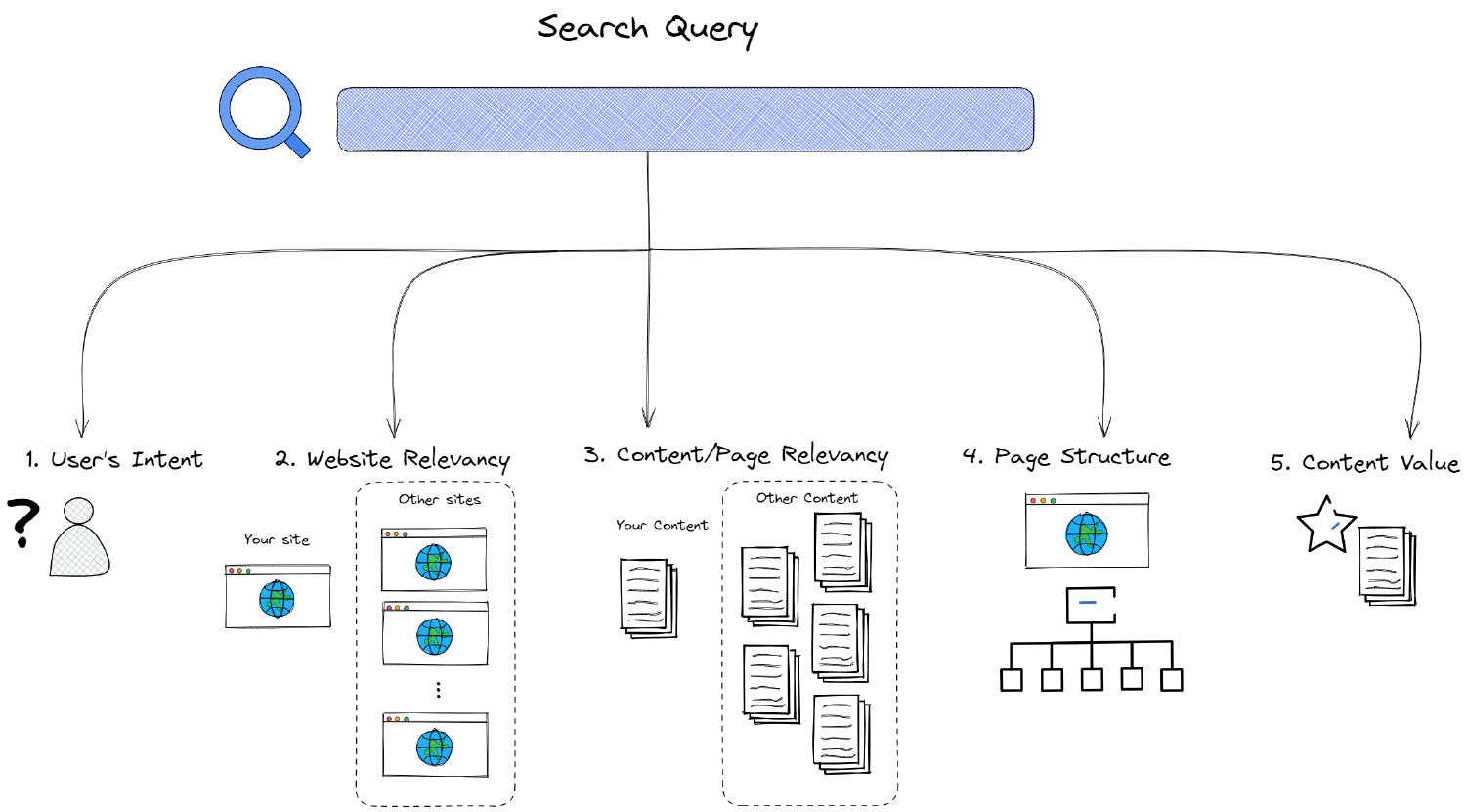How Search Engines Categorize Content (And What You Can Do to Help It)

Introduction: Categorizing content for Search Engine Optimization (SEO) on your Website
SEO is the process of improving the visibility of a website or a web page in search engines’ unpaid results—often referred to as “natural”, “organic”, or “earned” results based upon content. SEO can take on different forms based on the kinds of search, including image search, local search, video search, academic search and news search. SEO may also involve both internal and external optimizations for a website with the use of backlinks and referrals to relevant web pages. Although it is helpful to perform SEO best practices on your website, it is valuable to understand the form in which search engines categorize your website’s content to find your audience organically.
ℹ Important: Understand how search engines crawl your entire site
A search engine has to crawl your site in order to share the page’s content as an organic result online for when a user searches anything; healthy eating tips, selling your car, buying appliances, and anything else. Before a search engine can determine which particular piece of content should rank for a certain keyword, it needs:
- Context in data about what your website talks about or shares
- How your content is categorized within the structure of your website; and
- Whether or not that website address a user’s intended search
How Search Engines Categorize Your Content 🔎
Search engines are the gatekeepers of the internet and they can be your website’s best friend and worst enemy.
A search engine’s job is to provide users of their engines with relevant suggestions based upon their intent to best respond to their questions or queries.

In the past, search engines would make a contrast between the words contained in the search vs. the keywords available on an indexed
website. So, if you poured keywords into your web page you would outrank most other pages even if the content was hidden. Today, the
most successful SEO strategies are focused on attracting relevant traffic and creating an effective user experience for their
specific audience based on the entire website. Index crawlers for search engines now take a more complete approach by
looking at 5 factors:
- Intention of the user - what did the user mean? What is the user looking for?
- Website relevancy - How relevant is the entire website to what the user is looking for?
- Content/Page relevancy - How relevant are specific pages on the website to what a user is looking for?
- Page Structure - How does the structure of the page resolve the user inquiry? Does it?
- Content Value - Does the content on the page provide more value than comparable pages for the user?
Each corresponding section will outline how these factors are considered by the search engine in detail. Search engines rank content on the basis of popularity, relevancy and trustworthiness. The more popular content is, the higher it ranks in search results. The way search engines categorize your content is based on keywords. For example, if you have a blog post about “How to Eat Healthy” then that post will be categorized under “Healthy Eating” and “Diet Tips” by Google.
Search engine algorithms are constantly being updated to make sure that the most relevant content is shown at the top of search engine results pages. There are many different factors that go into how search engines categorize your content, such as keywords, links, and page content.
User’s Intent: How user’s search is interpreted 🤔
User intent is the most important aspect of search engine categorization.
The user’s intent is what determines if the user is looking for a product, a service, or information about a certain topic.
In Google’s algorithm, the index crawler tries to answer the following questions on behalf of the user:
- Why would a user search this term or phrase?
- What value is the user looking to get out of resulting content?
- Are there types of websites that help the user most?
- What type of content would best help the user?
The search engine categorizes the user’s intention by looking at how they are searching and what they are typing in. For example, if a person types “I want to buy shoes” then the search engine will assume that they are looking for products and show them shoes on their website. If they type “What are some shoe stores near me?” then it will show them local shoe stores in their area. Understanding what the user wants is vital to providing an excellent customer experience online.
Website Relevancy: How relevant is this website for the searched terms 📇
Another element that search engines use to categorize each piece of content is by looking at the subjects and topics of the website through meta descriptions and keywords. An example might be the most helpful way of understanding how this website relevancy is important to user’s searching:
Let’s say someone who lives in Toronto, Canada is looking to purchase a car with the search “Where to buy a used car” 🚗
Before a search determines which website should be categorized and rank for that particular keyword, it has to look at what that website is about. Although there are millions of sites online, there are probably only a few relevant pages about “Where to buy a used car” for a user from Toronto, Canada.
Here is what each website is about in general:
- An auto insurance website
- An auto trader website (from USA)
- An auto repair website (local)
- An auto trader website (from Canada)
The search index crawler would have categorized all of the websites into these website categories, but will then begin to rank the corresponding websites based on the User’s Intention from the search. Something like:
- An auto trader website (from Canada)
- An auto trader website (from USA)
- An auto repair website (from Canada)
- An auto insurance website
The category of the website determines if the website is a good fit for resolving the user’s needs from their search.
There are a lot more considerations for a search index, but this is roughly how websites are categorized.
Content Relevancy: How relevant are the pages from websites for the searched terms ✅
Content relevancy is the key to being found by users who are looking for your exact content. A website should have content that is relevant to the search terms that users are looking for in the terms that they would use to find the website. Best way to illustrate is to continue with the example of the user from Toronto, Canada looking for “where to buy a used car”. There’s a ton of content that will align with the user’s search, but the index crawler will begin to look at specific pages that may relate and rank the content accordingly.
Consider these five pieces of content for pages that may answer the user’s intended question from the search query:
- 5 Step Guide for Purchasing a Used Car
- How to Sell Your Used Car Quickly
- 10 Considerations When Adding a Used Car to your Auto Insurance
- How to Fix a Used Car on a Budget
- Toronto Ontario - Used Cars for Sale
Given the user’s location and their intention, the “Toronto Ontario - Used Cars for Sales” will rank the highest by way of content as it is the most relevant content to their needs. Although the purchasing guide might be helpful, search engines understand important terms of searching for a product or service to purchase than an informative blog.
Content Structure: Good page structure for addressing user’s intent 📖
 Content structure is a key factor in how your website is categorized. A page should be structured in a way that it can
be easily found by the user. Search engines look at the following elements of your pages:
Content structure is a key factor in how your website is categorized. A page should be structured in a way that it can
be easily found by the user. Search engines look at the following elements of your pages:
- URL structure (www.example.com/pages/content-relevant-to-user) 🔗
- Title tags
- Header tags
- Images and videos of content
- Copywriting
- Article author
- Backlinks and referrals
The above is not an exhaustive list, but one that looks at how elements on a website correspond to a user’s intent and whether or not the page content provides a user with value.
Content Value: High Value Content Offering for a User 📊
Once the content has passed the other category filters, it stands up against other similar content that can help address a user’s needs. Here is where the value of the content is useful for ranking against similar sites and pages especially.
For your website to be successful, you must outperform other content in the same or similar categories.
In the context of “Where to buy a used car” for the user in the example, the content must outperform the other websites offering the same by considering the following:
- Providing more options for the user
- Structuring the information on the website well enough for a user to understand quickly
- Adding more relevant pages that a user may be interested in (example: “Where to buy a used truck”)
Reference Diagram for Search Engine Categorization
Here’s a diagram you can take with you as a reminder on the items that go into search engine categorization and how your audience can find you online.

Reach out to us here at EV Advisory to see how we can help you cater your content to your target audience.